
If you, or someone you love, has ever experienced a panic attack, you know it can be very scary and even debilitating in the moment, as well as possibly traumatizing long term. A panic attack can be so powerful it presents itself as a heart attack in humans. But do dogs feel the same sense of panic we do?
Most veterinarians and canine behaviorists would agree they can. Dogs do experience panic attacks in the same way people do, meaning they experience a sudden feeling of intense fear and anxiety, causing strong physical and behavioral reactions.
Since dogs cannot tell us how they are feeling, we have to learn to observe and understand their body language and behavior. One of the first things we need to understand is the difference between anxiety and panic attacks, because they are different.

The Difference Between Canine Anxiety and a Panic Attack
Anxiety in dogs is generally a response to a fearful or negative experience with certain people, object, animal or situation.
But when does anxiety lead to panic?
It is not fully understood why panic attacks occur, both in humans and canines. Scientists aren’t really sure what is happening in terms of the brain chemistry when a panic attack occurs. In many cases, it can be difficult or impossible to attribute your dog’s panic to a specific cause. The source of a panic attack may be complex. However, there may be a triggering event, such as a loud noise, smell, something they see, or a memory.
What’s important to understand is a panic attack is exactly that – an attack. It’s quick and happens for reasons you may never discover. Of course, loud noises – like a thunderstorm or fireworks – can trigger a panic attack in a dog. You can prepare for these types of events by getting a canine calming aid and shielding your dog from the loud noise as much as possible.
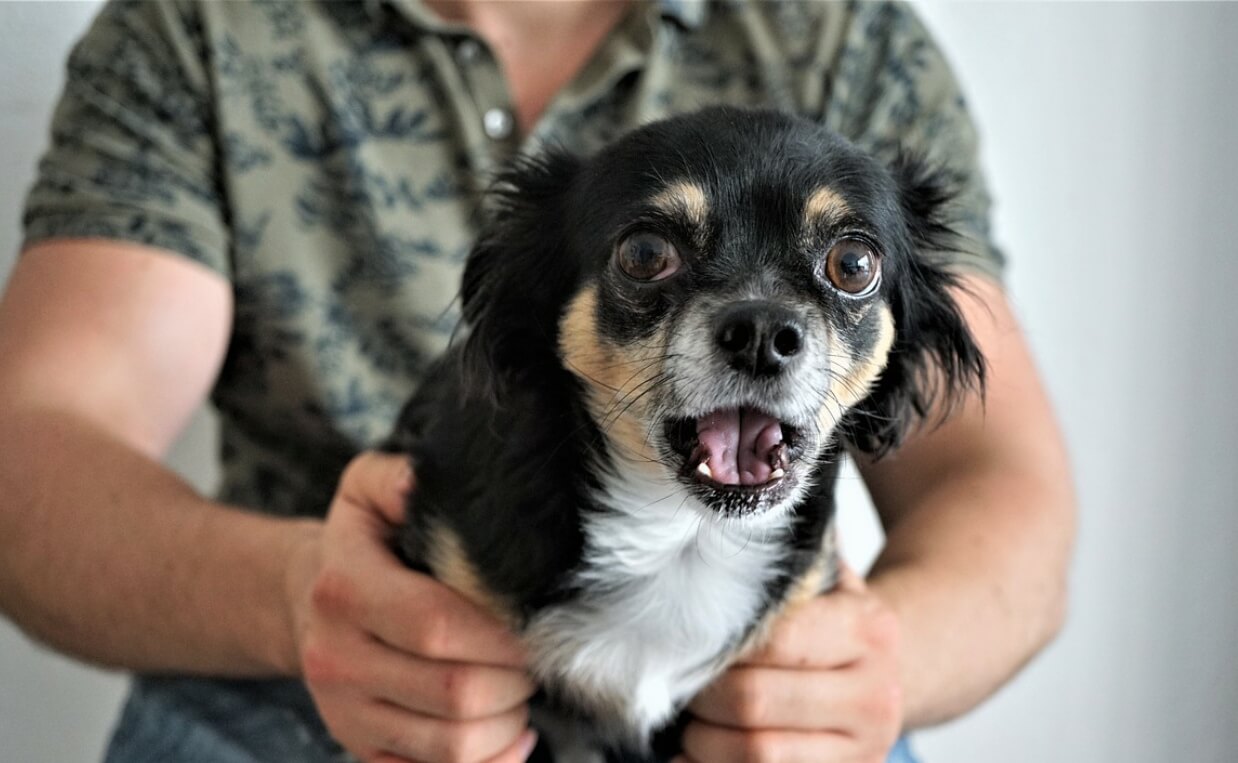
Panic can happen when a dog can’t escape something threatening, like a loud noise, vibration or some other triggering event.
Some dogs develop a panic disorder which is when the panic emerges from an internal place, such as a memory of a traumatic event or a feeling your dog associates with fear. Your dog may associate certain events to internal feelings which may make him or her want to get away as quickly as possible.
Panic attacks in dogs is usually a cry for help and can negatively impact the well-being of the dog. Dogs who suffer from regular panic attacks will experience an increase in their stress level, which lowers their quality of life and can lead to mental and physical health problems.
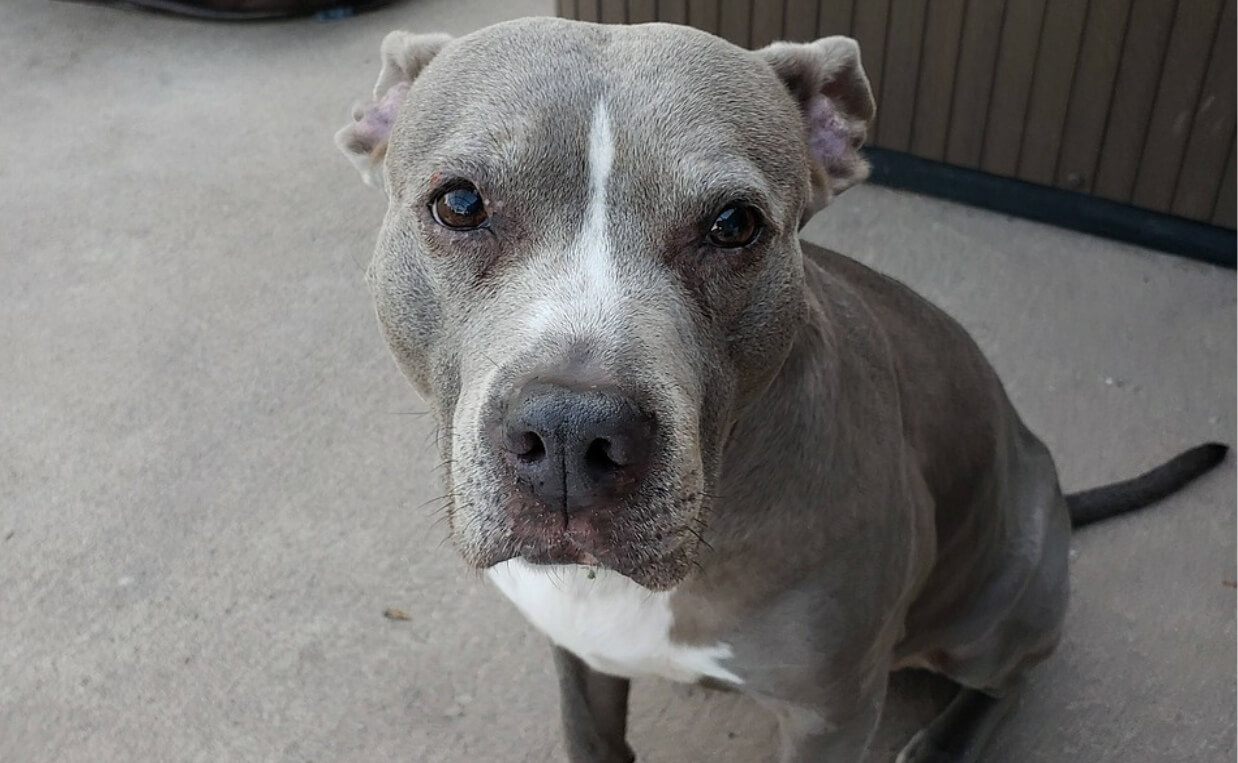
Signs a Dog is Experiencing a Panic Attack
A panic attack can be a very scary experience for a dog – and for you when witnessing one. Usually, a dog will try to escape what they perceive as something threatening, so you might see your dog looking for a place to hide, trying to get outside or run away. One dog I know was so panicked he tried to run through a plate glass window. Other signs of panic might include:
- Distressed whining
- Barking
- Shaking or trembling
- Dilated pupils
- Standing still or freezing
- Sudden panting
- Aimless pacing
- Trembling
- Excessive salivation
- Seeking attention in a frantic manner
- Pawing or jumping up on you
- Digging in the bed, closet or bathroom
- Vomiting
- Gastrointestinal upset, such as vomiting, immediate defecation or diarrhea
- Urinating
- Destructive behavior, such as trying to chew through a door to get out
- Self-mutilating behaviors such as chewing on their paw until they severely injure themselves, ignoring their own pain
- Biting if having a severe panic attack
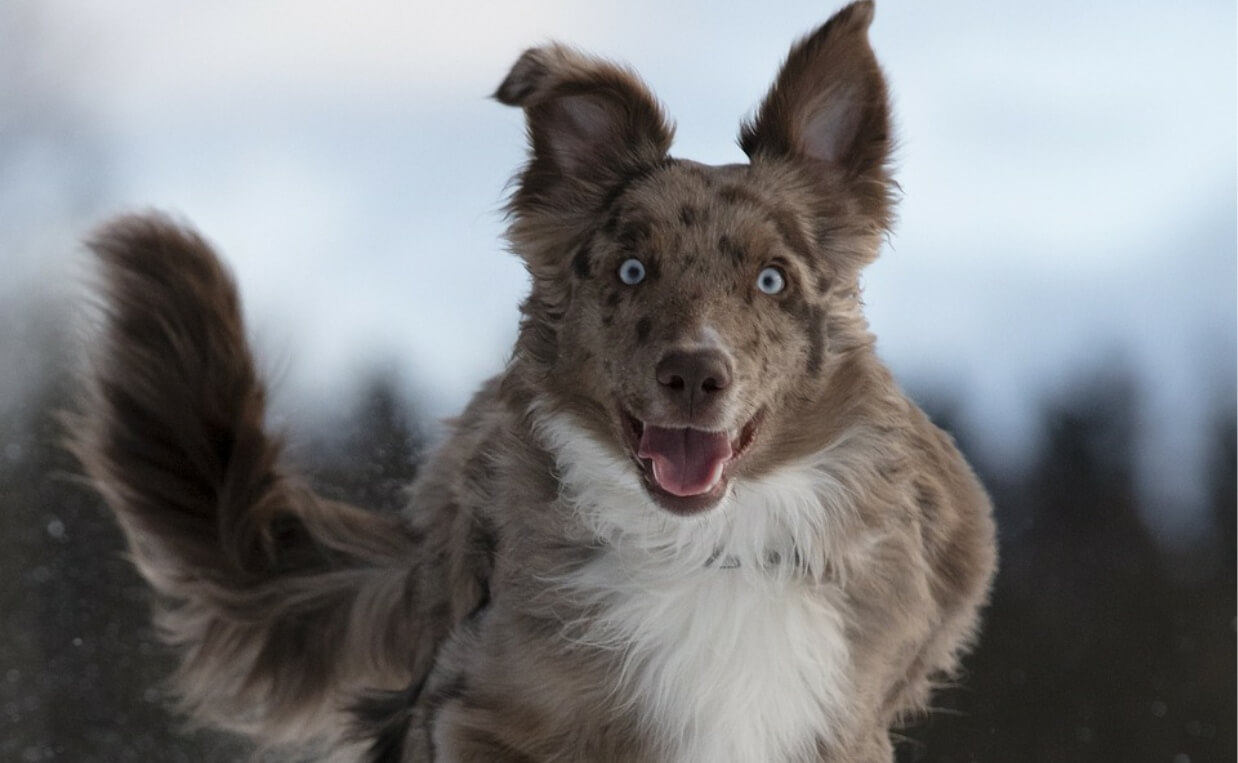
How to Comfort a Dog Who is Having a Panic Attack
There are many ways you can try to help your dog calm down when panicked. Since not every tactic will work with every dog, start by trying the tactics you think your dog will respond best to, and work through them until you find something that works.
Here are some things you can try to help comfort your dog if he or she is having a panic attack.
-
Stay calm
You can help your dog best if you stay calm and remain present with your dog. Dogs pick up on our energy, so by remaining calm you may help your dog manage his or her own emotions. Whatever you do, don’t exacerbate the problem by getting mad at your dog. Your dog is not trying to cause a problem for you. He or she is distressed and needs help. Raising your voice or expressing anger will not help the situation, and may even cause your dog to attack you.
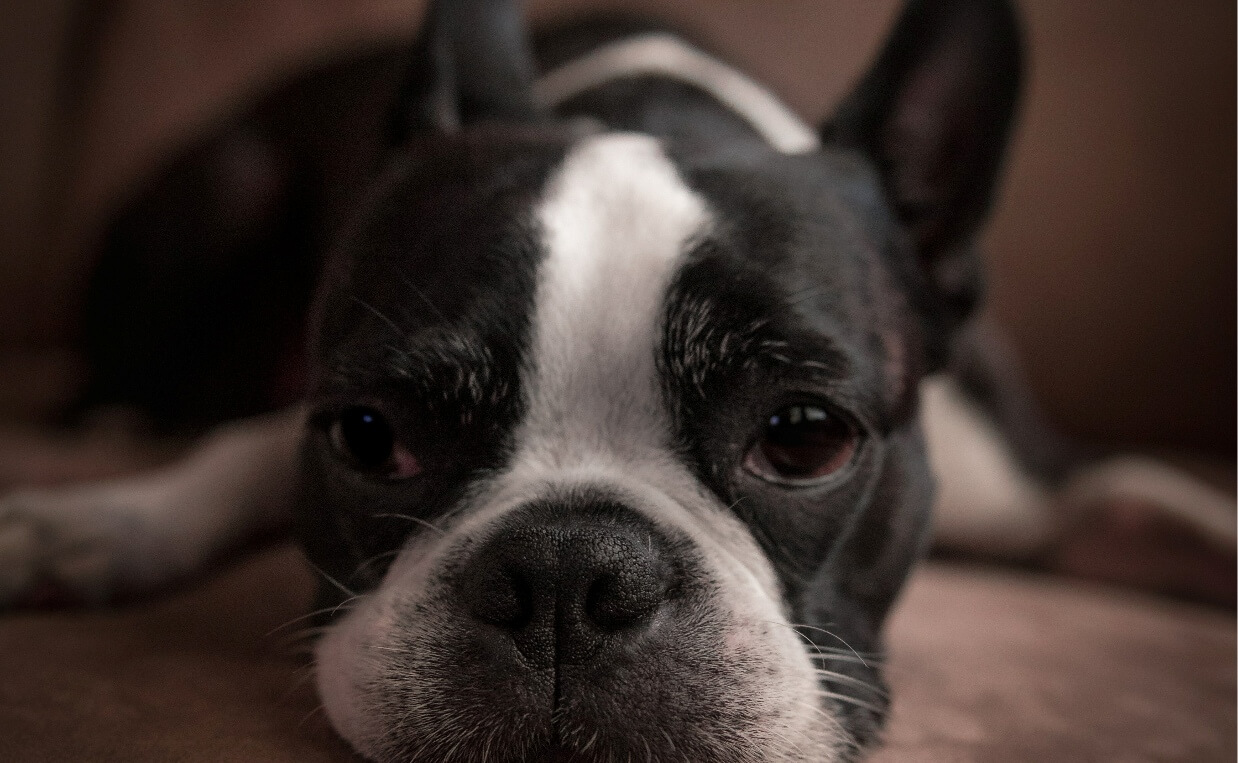
-
Refrain from talking
When your dog is panicked, talking to him or her will not help. Your dog can’t listen to you, and it can trigger more panic. While often our first response is to try to talk to our dog as a way of reassuring them, when your dog is panicking your voice only serves to add to his or her confusion. Your best bet is to stay as quiet as possible.
-
Stay with your dog
When your dog is panicked, stay with your dog. Your dog needs your help and will find your presence comforting, even if all you do is just stay present with him or her.
-
Take your dog to a safe place
If possible, get your dog to a safe place as soon as possible, preferably a quiet place where your dog can calm down. Think about the most relaxing room in your house and take your dog there. Try to find a place where he or she isn’t likely to be able to harm him- or herself.
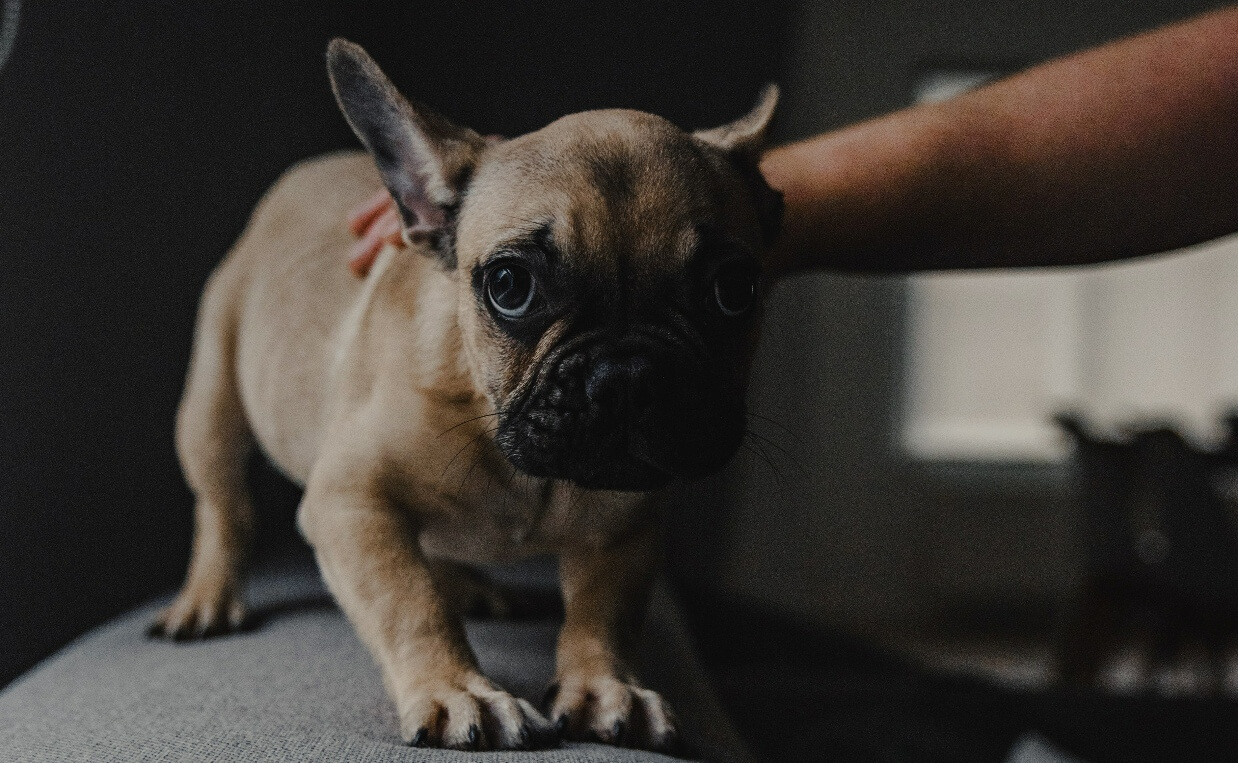
-
Try playing classical music, especially music composed by Beethoven
Classical music creates a calming effect in both humans and canines that releases dopamine and limits the production of cortisol, which can reduce stress symptoms. The soft sounds made with mostly string and key instruments are both beautiful to the ears and calming to the nerves.
Interestingly, research specifically on music composed by Beethoven has shown to reduce stress, provide pain relief and decrease anxiety. It can also trigger an array of basic and complex emotions associated with memories. His works can provide a cadence for staying present in the moment, enabling coping with current emotions until ready to move onto the next. This can be extremely helpful for a dog who is panicked.
Playing music is especially helpful if you suspect your dog is reacting to a noise as music can mask the offensive sound.
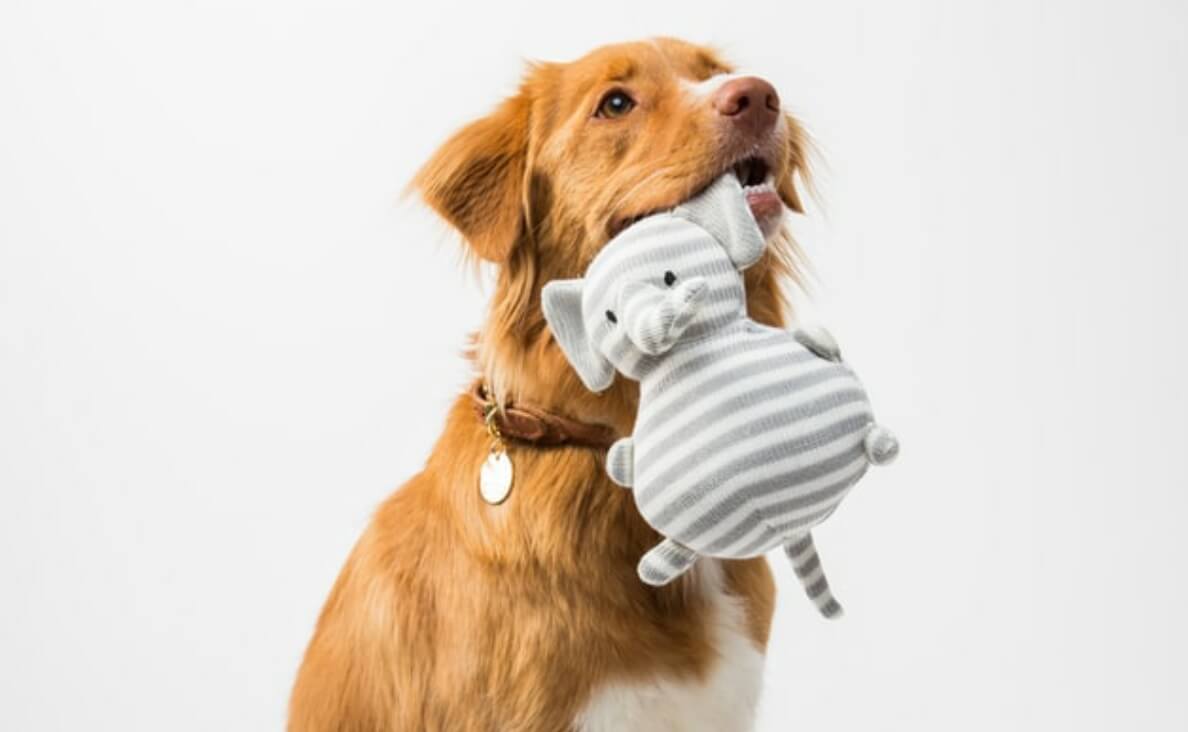
-
Try gentle stroking
Some dogs respond well to being stroked gently, but it can upset some dogs further. So be careful but if your dog generally responds well to being petted, you can always try it.
Some dogs respond well to being brushed or massaged, so you can try these tactics as well, especially if you already know your dog enjoys these grooming and soothing techniques.
-
Try offering a favorite toy
Sometimes dogs will respond favorably to their favorite toy or blanket as a comfort. Some dogs will even chew or lick their toy as a way to relieve stress. This can help them calm down.

-
Try taking your dog for a walk
Some dogs need to expend the excess energy the panic has built up. If you can safely put a leash on your dog, and you think your dog is calm enough to safely walk on the leash, try taking him or her for a walk or play fetch with them if they will engage with you. This can help them get that panicked energy out and help them calm down.
Just be careful with this tactic – some panicked dogs will try to run away and you don’t want your dog to bolt and become lost. If your dog is displaying frantic behavior, don’t try this tactic.
-
Try dog pheromone sprays or plug-in diffusers
Pet pheromones are undetectable to humans, but synthetic pheromones can be sniffed out by dogs.
Dogs have receptors located between their nose and mouth to help them recognize certain pheromones as positive, which produces a calming effect. Dog-specific pheromone products can help with anxiety, noise phobias, travel and panic attacks.
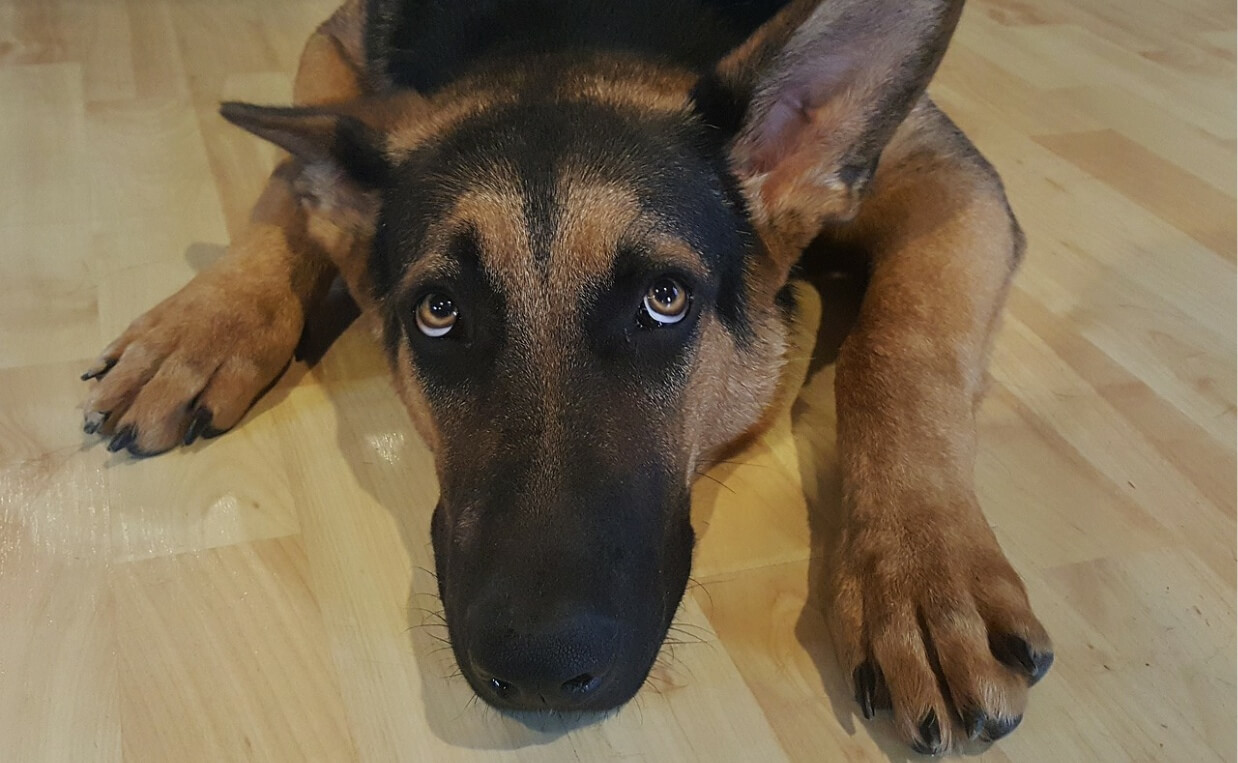
When to See a Vet
If your dog experiences a severe attack and you can’t calm him or her down, take your dog to a veterinary hospital. If it’s after hours look for an emergency veterinary hospital. A veterinarian will be able to assess whether your dog is in pain or if there is a medical reason for the attack.
Since dogs can injure themselves when experiencing a panic attack, take your dog straight to your vet if your dog has become injured or is self-mutilating.
If your dog has experienced more than one panic attack, he or she should be seen by a veterinarian. If you have a video of your dog while in a panicked state, be sure to bring it along with you to your appointment. Documentation of the events can help determine any triggers which can be key information for your veterinarian.
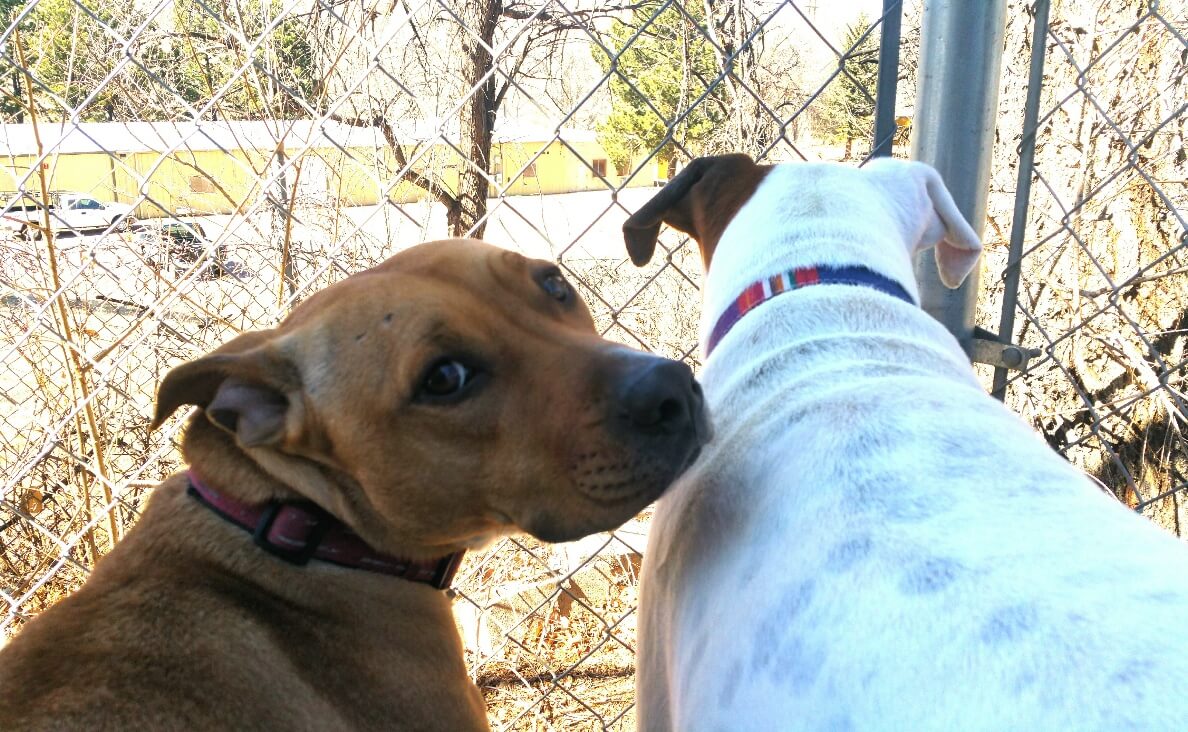
The Role of Dog Daycare in Preventing Panic Attacks
Sometimes a panic attack occurs when there has been a long-term build up of stress and anxiety. If your dog is left home alone for long periods of time on a regular basis, he or she may have an accumulation of stress and anxiety due to separation anxiety and even lack of exercise. Sometimes common household noises can cause long-term stress or another traumatic event can trigger a panic attack.
Dog daycare can help prevent panic attacks because your dog is in a safe, loving environment with lots of mental, physical, and social stimulation from human supervisors and canine friends. Group play is the perfect setting for your dog to safely expend energy running around, making friends with other dogs and getting some much-appreciated human love. Often, dogs experience lower symptoms of separation anxiety after regular visits to Canine Campus.

Final Thoughts
Canine panic attacks are not a normal response to anything – by definition. They’re over-the-top and out of proportion to the danger your dog is actually in.
If your dog is still a puppy, keep in mind early-life experiences can trigger later panic attacks. Proper socialization to sounds and stimuli are an important part of preventing attacks. Take the opportunity to introduce scary noises, vet visits, and crate train your puppy.
Always stay calm during training sessions for dogs of any age, and always use positive training methods, as physical punishment and verbal abuse can cause anxiety.
Has your dog had a panic attack? What happened? How did you comfort your dog and help him or her calm down? Please share your experience in the comments below…

 Understanding the Meaning Behind Different Sounds Your Dog Makes
Understanding the Meaning Behind Different Sounds Your Dog Makes Everything You Need to Know About Flying with Your Dog
Everything You Need to Know About Flying with Your Dog 10 Tips to Make Moving with Dogs Easier
10 Tips to Make Moving with Dogs Easier How Long Can You Leave Your Dog Alone?
How Long Can You Leave Your Dog Alone? Does Your Dog Have Back to School Separation Anxiety?
Does Your Dog Have Back to School Separation Anxiety?






Leave a Reply